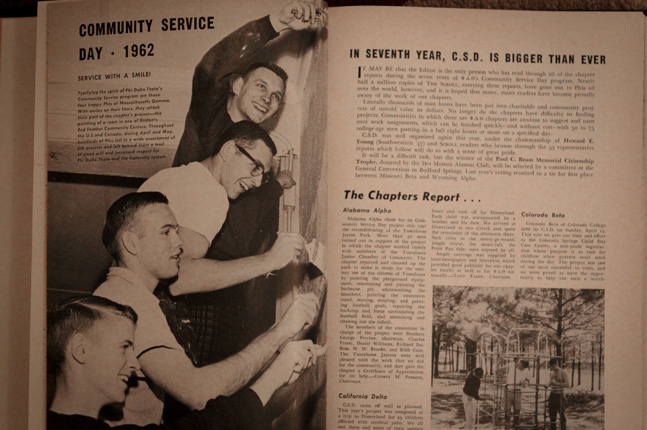
Community Service Day Introduced
1955Community Service Day, an idea proposed by Stanley D. Brown, Nebraska ’36, was first designated in 1955. On a specific spring day, usually in late April, all chapters of Phi Delta Theta performed such services as cleaning, painting, and repairing some public facility, renovating a park or playground, or giving a mass donation of blood. Each chapter reported its project and the participation of its members. The group judged to have performed the best public service was awarded the Paul Beam Memorial Citizenship Trophy.
Stan Brown, a future General Council president, described Community Service Day as “the opportunity to demonstrate the benefits of membership in the Fraternity when viewed in the broadest form. The philosophy of ‘All for One, and One for All’ certainly has a larger meaning when that ‘all’ considers the community at large.”
Featured in The Scroll for September 1961 was a report on Community Service Day from fifty representative chapters. The editor made a wide-scope summary: “In communities all over the US and Canada, the men buckled down to manual tasks, many of them in the category of back-breaking labor. Parks and camps were cleaned, orphanages and hospitals scrubbed and painted on the inside, and grounds manicured on the outside. Little League baseball diamonds were constructed or made ready for use, and underprivileged children and aged families were aided. Indeed, the projects were many and varied, and thousands of man-hours were put into them.”

